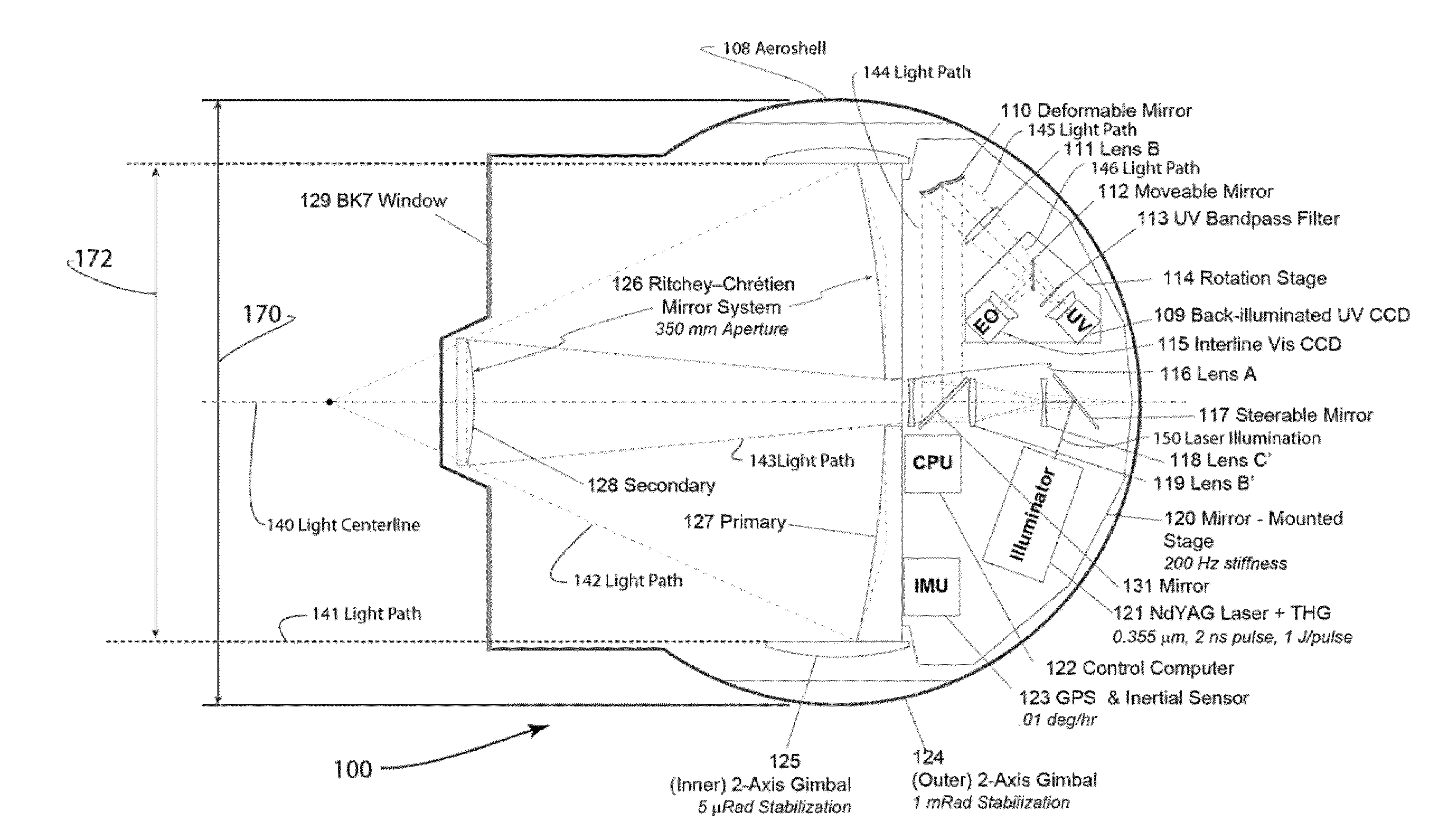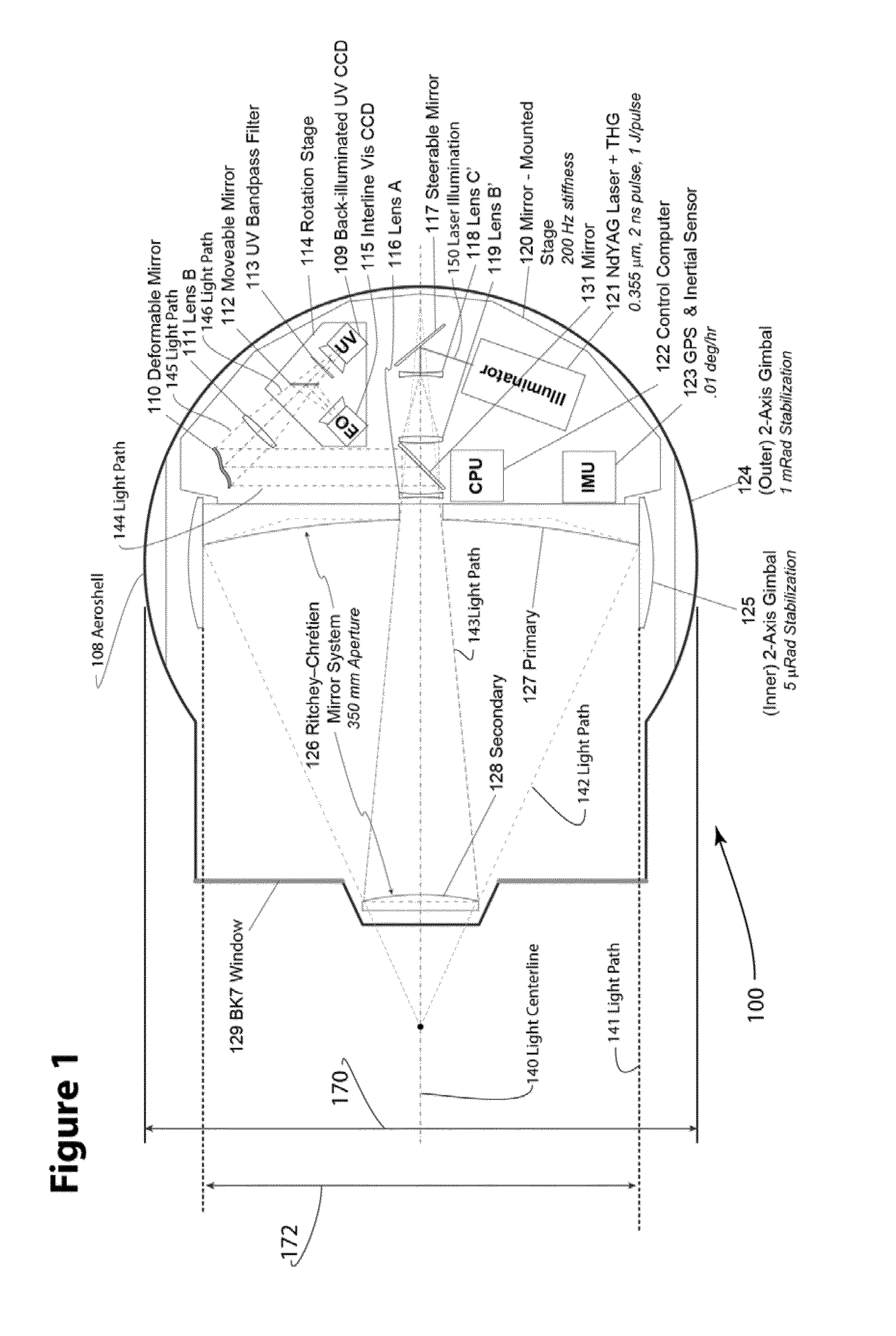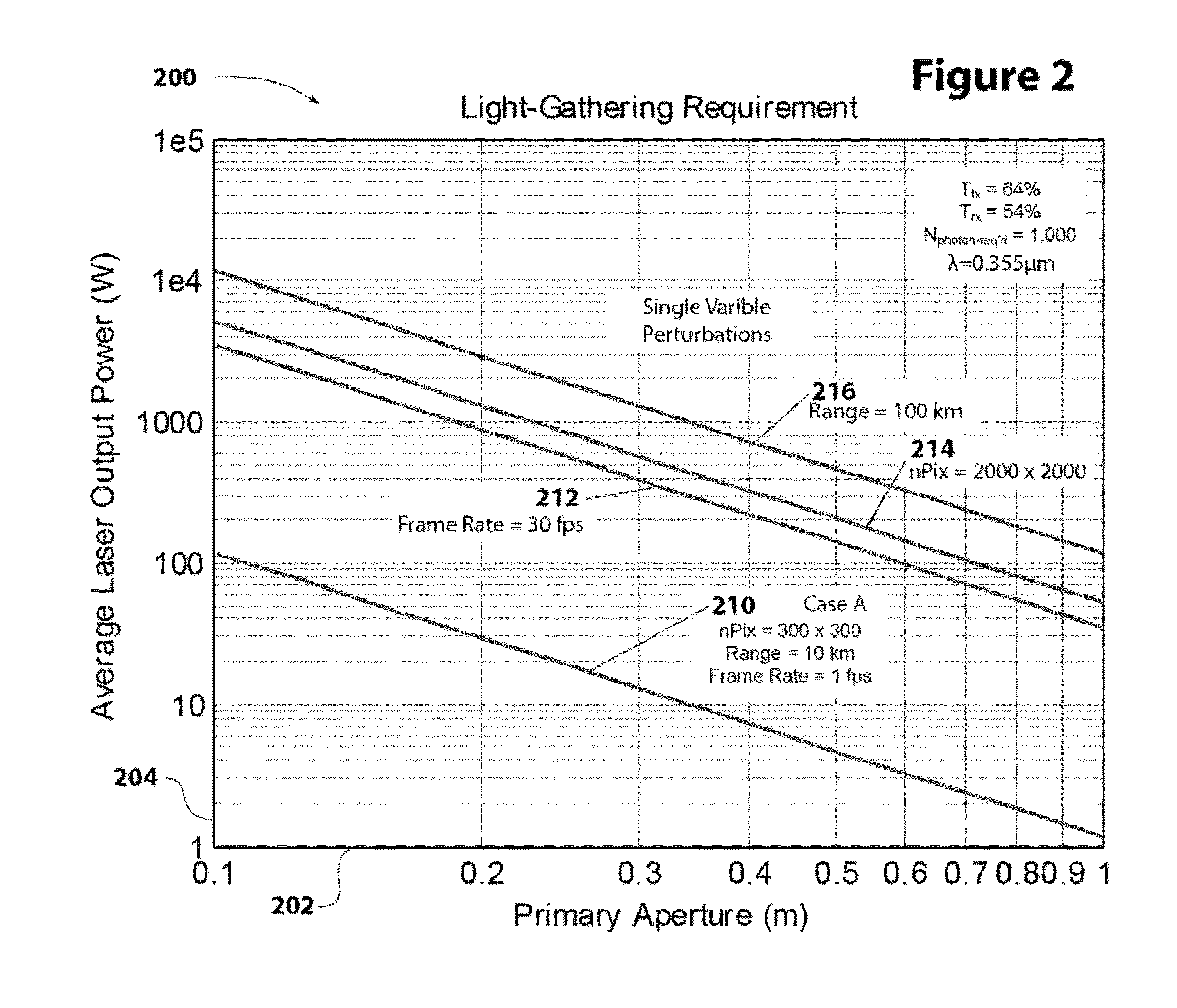Systems and Methods for Illumination and Observation
a technology of system and method, applied in the field of apparatus and methods for illumination, observation, surveillance, and tracking of objects, to achieve the effects of reducing system complexity, cost and operational logistics, and reducing system packaging
- Summary
- Abstract
- Description
- Claims
- Application Information
AI Technical Summary
Benefits of technology
Problems solved by technology
Method used
Image
Examples
Embodiment Construction
[0022]The diffraction limit of resolution indicates that for a given required angular resolution, the size of the sensor aperture required is directly proportional to the wavelength of the light. Since smaller apertures are desirable for logistics and cost reasons, systems that use the shortest possible wavelength will be preferred. Novel systems and methods for using very short wavelengths in ISR systems are described.
[0023]Solar radiation in the ultraviolet range (wavelengths less than 0.390 micrometers) is mostly filtered out by atmospheric absorption, and very little solar energy in this range reaches the ground. But ultraviolet absorption is primarily due to ozone (O3) found in the upper atmosphere above altitudes of about 40,000 feet. Below about 40,000 feet in altitude, the atmosphere is essentially transparent to ultraviolet radiation longer than 0.350 micrometers.
[0024]Because of this, and also the fact that human sight is insensitive to wavelengths below about 0.390 microm...
PUM
 Login to View More
Login to View More Abstract
Description
Claims
Application Information
 Login to View More
Login to View More - R&D
- Intellectual Property
- Life Sciences
- Materials
- Tech Scout
- Unparalleled Data Quality
- Higher Quality Content
- 60% Fewer Hallucinations
Browse by: Latest US Patents, China's latest patents, Technical Efficacy Thesaurus, Application Domain, Technology Topic, Popular Technical Reports.
© 2025 PatSnap. All rights reserved.Legal|Privacy policy|Modern Slavery Act Transparency Statement|Sitemap|About US| Contact US: help@patsnap.com



